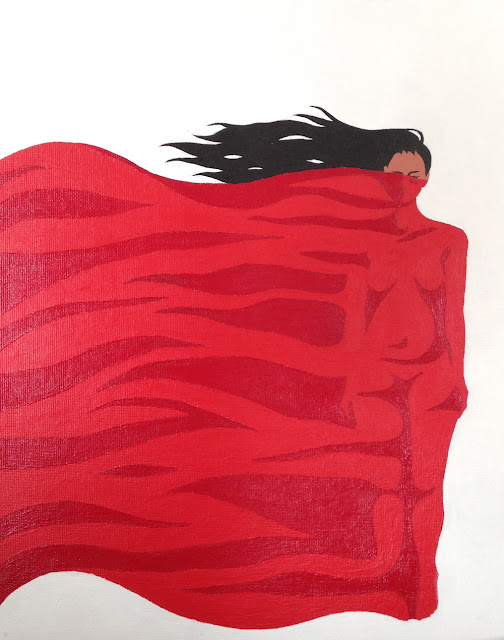#NotYourPrincess is one of those books that is so stunning in so many ways, it is kind of hard to decide where to start!
Let's start with the title. The hashtag title is perfection. It boldly says that Native women are here and we have things to say.
Some of you may know that a lot of activism takes place on Twitter. Native people have been creating and using hashtags to inform others about the things Native people care about. Did you, for example, follow the conversations that took place using #NotYourPocahontas and #NotYourMascot?
#NotYourPrincess is the first part of the title. The rest of it is "Voices of Native American Women." That's what Charleyboy and Leatherdale give us this time. The words and art of Native women. Let's take a look inside their book...
A couple of years ago, I was visiting Heid Erdrich at Birchbark Books. While there, I saw a stunning painting by Aza E. Abe. She's Turtle Mountain Ojibwe. Her painting, titled RedWoman, is the first item in #NotYourPrincess! (Some of you may know, too, that it is on the cover of Louise Erdrich's The Round House.)
Facing it is a piece written by Leanne Simpson. She's Michi Saagiig Nishnaabeg:
Turning the pages, it is easy to see why Lisa Charleyboy and Mary Beth Leatherdale put these two items side-by-side as an opening for the book. With them, I am visually and textually drawn into an Indigenous space that wraps me in a warm embrace, and that--in some instances--pierces that warmth with truths, but right away, brings me back to that place of knowing the power of Native women.
The next double page spread has Tear -- a poem by Linda Hogan (she's Chickasaw) -- that is about the past and future. Here's the last part of her poem. It resonates with me, deeply:
The world behind them did not close.
The world before them is still open.
All around me are my ancestors,
my unborn children.
I am the tear between them
and both sides live.
It is brilliantly paired with a painting by Wakeah Jhane (she is Comanche/Blackfoot/Kiowa):
She is a self-taught ledger artist. The ledger behind the woman in the painting signifies ancestors who were at boarding schools, while the child she carries embodies the future. I mean it when I say that I'm sitting here, blinking back tears at the beauty, the power, and the resilience in #NotYourPrincess. I'd love to upload images of every page, but of course, won't do that.
What I will do, is tell you to get a copy right away for yourself, and for Native teens in your life. I sang the praises of Dreaming in Indian and of Urban Tribes but there's a quality to #NotYourPrincess that... well, that I don't have words for yet, that do justice to how it is impacting me.
****
The work of 58 different Native women is in #NotYourPrincess. Art, words, photography. What you see and read in this book will linger in your head and heart.










